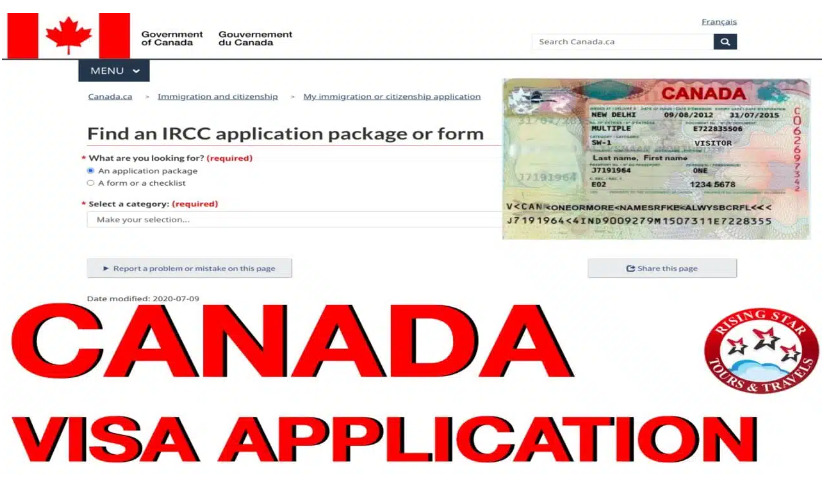IRCC has reported a record immigration application backlog in history.
NewsOnline Nigeria reports that Immigration, Refugees, and Citizenship Canada (IRCC) unveiled its latest data on the immigration application backlog, revealing a significant rise in applications under processing.
The report, which reflects data as of July 31, 2024, indicates that the total number of citizenship, immigration, and visa applications in the system has reached a record high of 2,364,700.
Immigration News Canada has provided an in-depth analysis of this critical update, offering insights into the current state of Canada’s immigration processing challenges.
ALSO: Canada Ends Visitor-To-Work Permit Policy For Nigerians, Others
Category-Wise Backlog Overview: According to garnered reports, as of July 31, 2024, the IRCC highlights a substantial backlog of 1,002,400 applications, exceeding the normal service standards for the first time since November 2022.
As outlined, this backlog encompasses various application types:
- Citizenship: 39,000 applications are backlogged, with 193,500 still being processed within the service standards.
- Permanent Residence: 299,000 applications exceed the normal processing time, while 467,200 are within the standards.
- This means that 299,000 applications for Permanent Residence are currently experiencing delays and exceeding the standard processing time.
- While the 467,200 applications for Permanent Residence are being processed within the normal service standards.
For Temporary Residence applications:
Temporary Residence: The most significant backlog, with 664,400 applications exceeding service standards, and 701,600 applications processed on time.
This means that 664,400 applications are experiencing delays and are not being processed within the standard time frames.
While 701,600 applications are being processed within the normal service standards, meaning these applications are being handled in the expected time frame.
This data illustrates that while a substantial number of Temporary Residence applications are being processed on time, there is a large backlog that is causing delays for many applicants in this category.
In total, the backlog represents a significant portion of the applications being processed, underscoring the pressure on the immigration system.
Comparison with Previous Data:
According to reports, a month-on-month analysis reveals that while there has been a slight decrease in the backlog for citizenship and permanent residence applications from June 30 to July 31, the situation for temporary residence applications has worsened. Specifically:
Citizenship: Backlog decreased by 3.70%. This means that the number of citizenship applications exceeding normal processing times has reduced by 3.70% from the previous reporting period. This indicates some improvement in reducing delays for citizenship applications.
Permanent Residence: Backlog decreased by 0.93%. This means that the number of permanent residence applications experiencing delays has decreased by 0.93% from the previous month.
This shows a slight improvement in processing times for Permanent Residence applications
Temporary Residence: Backlog increased by 11.80%. Translating that the number of Temporary Residence applications that are delayed has increased by 11.80% compared to the previous period.
This signifies a worsening situation with a growing number of Temporary Residence applications falling behind the standard processing times.
The backlog for citizenship and Permanent Residence applications has slightly improved, while the backlog for Temporary Residence applications has significantly increased.
Overall, the total backlog grew by 7.02% over the two-month period, largely driven by the increase in temporary residence applications.
Future Backlog Projections:
Further reports reveal that looking ahead, the IRCC anticipates a potential decrease in the backlog by 20-30% by mid-2025. But projections for the end of August 2024 indicate mixed results:
For Citizenship, there was an expected backlog of 16%, compared to an actual 17% at the end of July.
Suggesting that there was a forecast or expectation of a 16% backlog in citizenship applications.
However, the actual backlog at the end of July was 17%. In other words, the real backlog was slightly higher than anticipated by 1%.
Express Entry: Projected at 15%, matching the previous projection. This means that the backlog or processing time for Express Entry applications is expected to be 15%. This projection is consistent with the previous estimate, indicating that the forecast has remained stable without any change.
Temporary Resident Visas (TRV): A sharp decline from 64% to an anticipated 43%. The backlog or processing time for Temporary Resident Visas is expected to decrease significantly from 64% to 43%.
This indicates a notable improvement in processing efficiency or a reduction in the volume of pending applications.
Study Permits: A projected backlog of 18%, up from 24% in July.
The backlog or processing time for Study Permits is projected to be 18%, which is an improvement from 24% in July.
This shows that the situation is expected to get better, with a decrease in the percentage of pending applications.
Implications for Applicants
- The IRCC’s goal, as reported, is to process 80% of applications within service standards, considering a backlog below 20% as normal.
- While the agency has largely met this goal for citizenship, express entry, and family sponsorship applications, temporary residence categories continue to face significant delays.
- The increase in new applications for temporary resident visas, study permits, and work permits has exacerbated the backlog in these areas.















